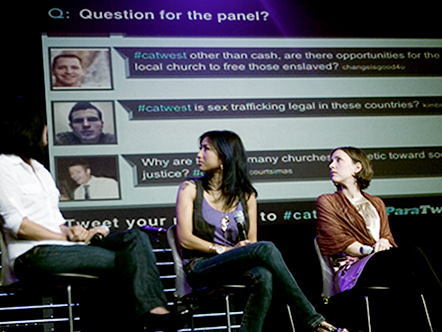 Transcripts are essential for twitter chats. Not only to refresh your memory of the chat but they’re also great for those who were unable to participate during that hour.
Transcripts are essential for twitter chats. Not only to refresh your memory of the chat but they’re also great for those who were unable to participate during that hour.
If you’re not familiar with #tourismchat, it’s a biweekly twitter chat focusing on social media in the tourism industry. Each chat varies but we normally see over 300 tweets from 50-75 twitter users during that hour.
As many of you know, we were using “what the hashtag?!” (wthashtag.com) for the #tourismchat transcripts but for some reason the site started displaying error messages, for both the #tourismchat and #SoMeT hashtags. It’s working now but was down for a few weeks so I researched other twitter transcript sites for a substitute method.
Here are my results:
what the hashtag?! http://wthashtag.com
-pros: easy to use, customizable, list basic hashtag usage stats, create transcript for custom dates, unique transcript URL
-cons: site did not work for a few weeks, stats are only available for the past 7 days
Tweetdoc http://tweetdoc.org
-pros: provides a nice pdf transcript, use custom dates
-cons: not instant/takes time to process, pdf must be housed somewhere (I use Google Docs) for easy sharing
tweetreach http://tweetreach.com
-pros: interesting stats include exposure and impressions
-cons: no custom dates, transcripts for up to 50 tweets are free, monthly plans are expensive
Twapper Keeper http://twapperkeeper.com
-pros: use custom dates, creates RSS feed & excel version of transcript
-cons: must format export with text to columns in excel before saving into google doc, could be a user error but I don’t always get all of the tweets in the export.
For geeks: As I was researching these sites, I came across this very cool site. Summarizr provides charts and stats for any hashtag, via Twapper Keeper. The #tourismchat Twapper Keeper account was created in the beginning of December so these stats only reflect the past two chats.
My temporary solution for replacing wthashtag was a hodgepodge of things stored in a google doc. I plan to continue updating this doc but my preferred method is definitely what the hashtag?!
What are your preferred methods for accessing and sharing twitter transcripts?
Read Full Post »
 Ever since my #geekcation in Chicago (an excuse to work on Explore Chicago’s Foursquare badges), I’ve said that I would love to see a CVB create a Foursquare guide. Well this is it! Foursquare recently allowed brands to get pages for free and also unveiled a new lists feature on Monday.
Ever since my #geekcation in Chicago (an excuse to work on Explore Chicago’s Foursquare badges), I’ve said that I would love to see a CVB create a Foursquare guide. Well this is it! Foursquare recently allowed brands to get pages for free and also unveiled a new lists feature on Monday.











